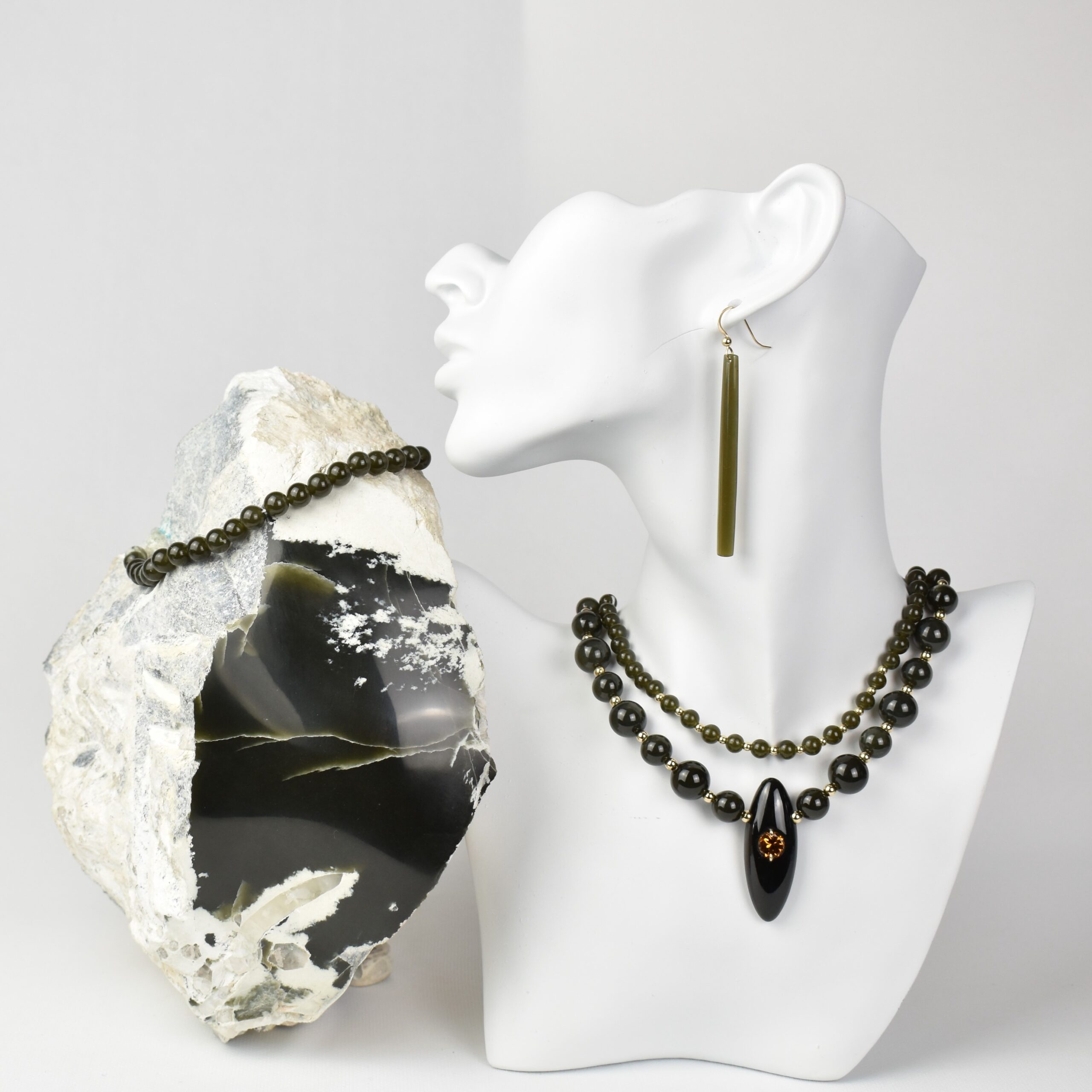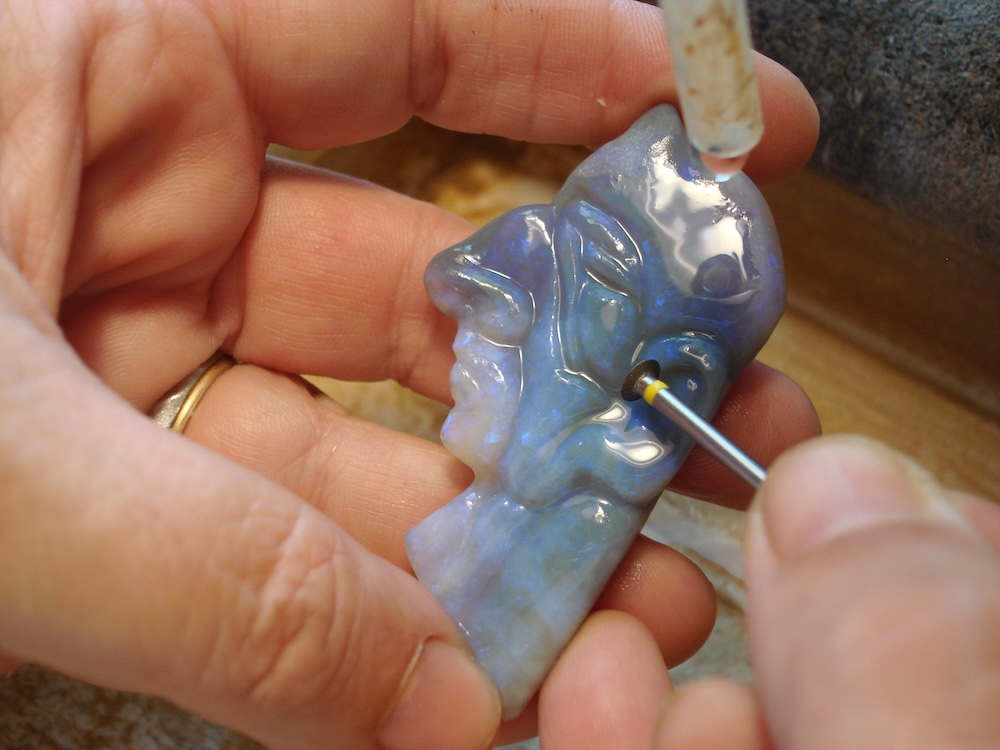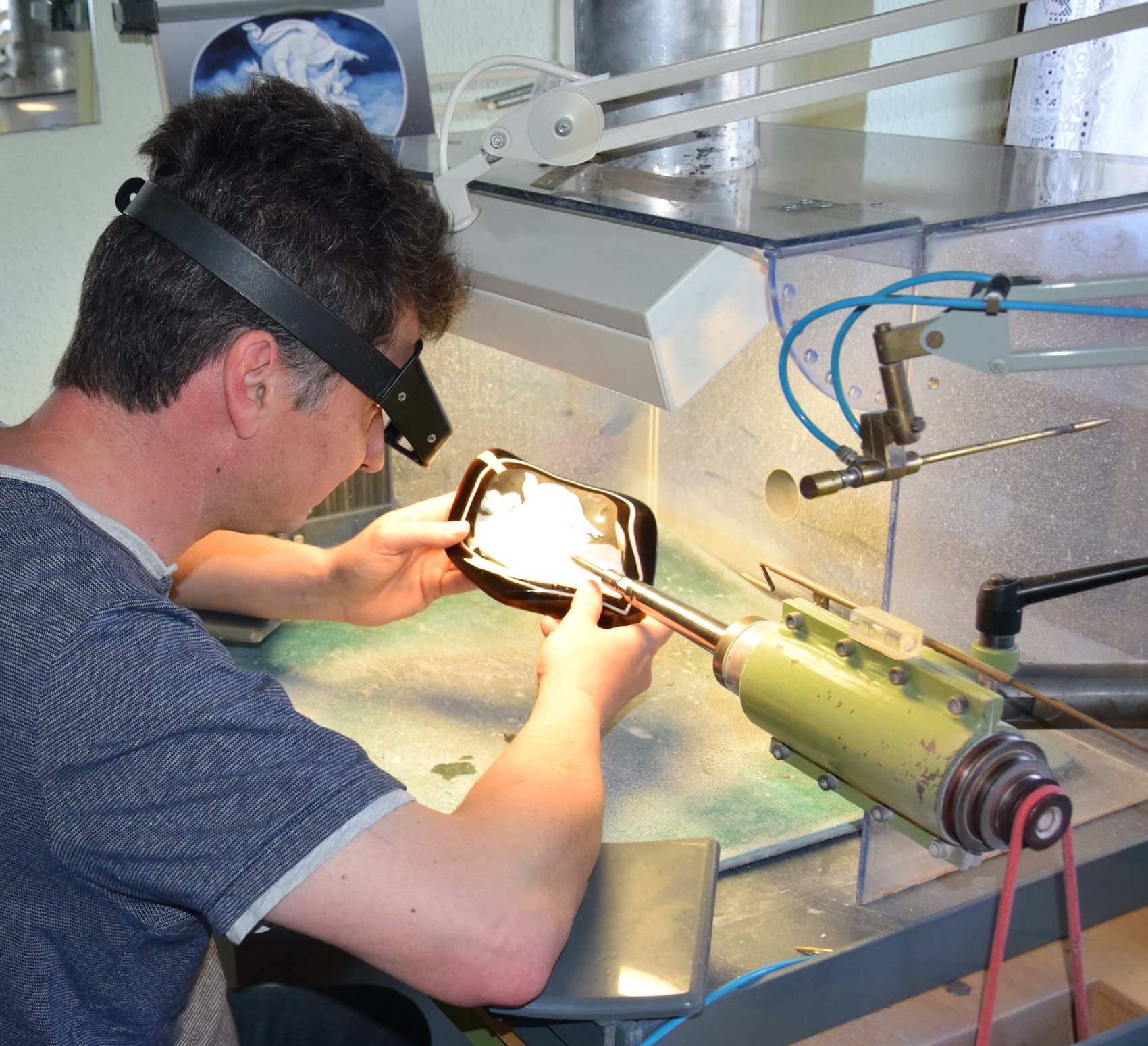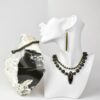This translucent cup and saucer set is carved from nephrite and is generally known as vessels of the Mughal or Hindustan style, a term coined by the 18th-century Chinese Emperor Qianlong. Originating in Central Asia but reaching its full maturity in India during the Mughal dynasty (16th-18th century), this style was introduced to China in the mid-18th century and particularly favored by Emperor Qianlong. This style deeply influenced the Chinese art of jade carving in the following centuries. Most Mughal-style jade carvings are food or drink vessels. The two unique characteristics of the Mughal-style vessels, the translucency of the material and the rich use of floral motifs, are also visible on these two objects.
The thin wall of the translucent saucer is crafted into a few layers of chrysanthemum petals, a motif popular during the early 18thcentury. The interior base of the saucer is decorated with leaf arabesques embellished with small cabochons of rubies and emeralds. The handles of the saucer are shaped like two flower buds flanked by leafy stems. The acanthus leaves, another common motif of Mughal-style jade carving, extend around the finely polished exterior of the cup and show the precision and exceptional skill of the craftsmanship. The purity of the material and the naturalism of the designs have caught the attention of admirers for centuries. As Emperor Qianlong wrote in one of his seventy poems on Mughal-style jade, “I simply cannot keep myself from gazing at it again and again.”
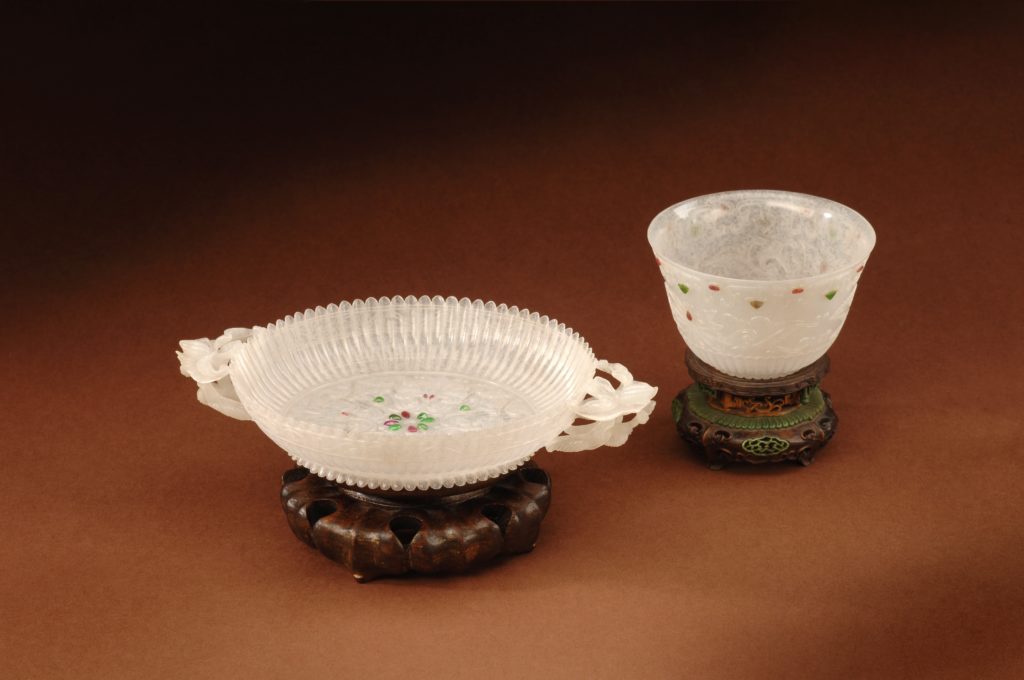
19th Century

